Pokemon Scarlet & Violet is the sequel to Sword and Shield, the first game of the new generation. But by learning from Legends Arceus, a fantastic new take on the series is emerging.
A STUDY IN SCARLET
Pokemon Scarlet & Violet, the flagship games of the next generation of Pokemon, find themselves in an interesting position. A new generation of Pokemon is always a time for introspection, reflection, and gentle evolution, but earlier this year, a single Pokemon spinoff upended all expectations of what the series could be. The question facing Scarlet & Violet is easy to ask but difficult to answer: what will the next evolution of Pokemon look like, given all the tradition-breaking ideas that Legends Arceus has put forward?
This question is an interesting invitation for the Pokemon series to evolve, and Scarlet and Violet appears to have a solid, full-bodied answer. In the way it draws ideas from Legends, from Sword and Shield, from the series' traditions, and yes, out of thin air, it is perhaps the most significant generational reboot of Pokemon in the history of the series. And it pleases.
During the 90-minute hands-on session, I got to play through the world of Pokemon Scarlet, one of two releases coming next month, with a fairly traditional division of content between Pokemon, Legendaries, and even two different Poke Professor trainers. My time with Scarlet is equivalent to the time I've spent with both games, and I've been impressed by the series' evolution in a way that's less bland and safe than I expected.
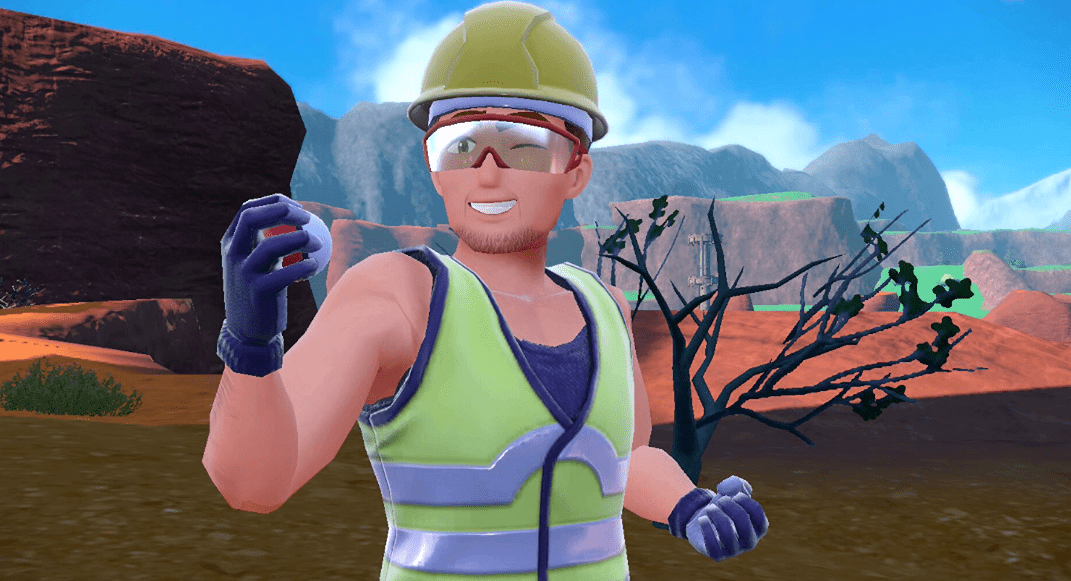
In some ways, what the new Pokemon games are going for is contradictory, to say the least. The Pokemon reps walking us through the game casually called it the "most simplistic" Pokemon game to date - but that doesn't mean the games are simplistic or easier. It's a full-fledged Pokemon game - but with fewer obstacles to jump through.
Essentially, "simplifying" this game basically means removing barriers and simplifying the gameplay - which plays into this game's status as a true open world where you can go anywhere and do whatever you want. While the comparison is a bit of a cliché, it does make the game feel more like Breath of the Wild. Just like that game, there isn't just one thing you have to do—the choice is yours. While past Pokemon games had a more linear structure—gyms laid out in a matrix, like dungeons in Zelda—this game is more open-ended. Go anywhere, do it. Do you see that mountain over there? You can... you get the idea.
Go with the flow
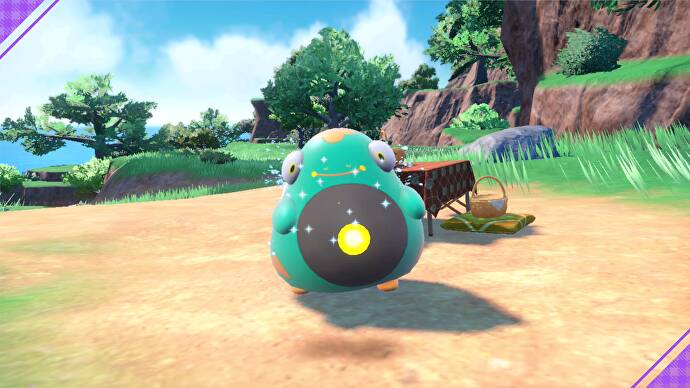
After Arceus, this seems like a relatively natural progression. At the same time, however, it is important to highlight how different this game is from others. To make a patently ridiculous comparison, Arceus is more like Dragon Age Inquisition, an "open zone" game where you choose which zone you want to go to and then explore it freely. Scarlet and Violet are more like Skyrim, with all the Spanish and Portuguese inspired Poké regions available to explore, with no loading times or interruptions.
It all seems like a relatively unremarkable concept, but it's only when you play the game that the strengths of both the concept and its execution become clear. Take Pokemon Centers for example - they're usually buildings, but now they're more like open-air kiosks. The functionality is the same, but there is no need to go through a door, there are no loading screens - you just walk up and talk to the NPC behind the counter, right here in the center of Overworld. Sorry to bring this comparison back - really, sorry - but the Poke Centers in this game are very similar to the stables in Breath of the Wild. Not exactly cities, but outdoor recreation areas that also serve as fast travel points. It just feels right.
What I like about the open world is how sound is used. The iconic music from the Pokemon Center is still present - but it's diegetic music, presumably played through the speakers of the stands in the outdoors. As you get closer to it, you will hear the music getting closer and louder - almost soothing. Likewise, in the city I come across a wandering musician, and as I approach, the music turns into an acoustic guitar version of the city theme, matching the sound to his actions. There are many such touches, they help the world flow despite its completely open nature.
You can see where the focus is. Head into town and you'll see a plethora of shops, divided into several outlets - one selling hats, another selling shoes, a third selling socks and tights. But these aren't physical stores that you walk into and explore—you walk in the door and a menu appears on the screen from which you make your selection. In a sense, this is a streamlining - the team clearly wanted to focus on creating an expansive world rather than creating small interior spaces.
Or, indeed, the team wanted to focus on the main thing - to have many options for clothing with many useful properties. No clothing or style is gender specific - so no matter what base trainer type you choose at the start of the game, you can wear whatever you like. You have the ability to take selfies in both single-player and multiplayer, and gym leaders even take selfies with you after they've been defeated - so your character's appearance matters a lot.
No matter how you look at the game, it's more open than Pokemon has ever been before - even compared to Legends Arceus.
Story Rhythms
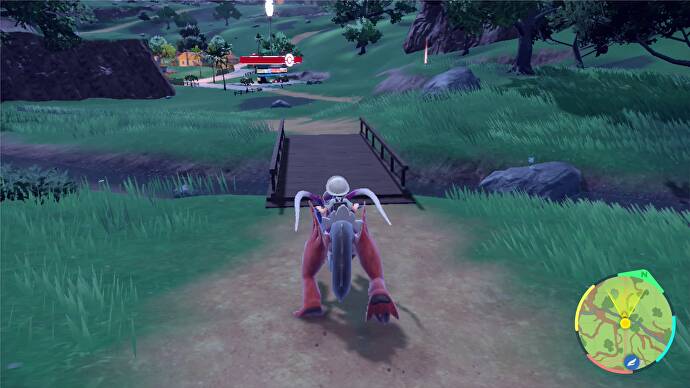
As for the structure of the game, when I began my practice - which began with a save file located a short distance from the game - there were three main “storylines” available to me. One of them, the "Titan" path, involved researching mysterious Pokémon - but the attendants warned me that while I could continue this storyline, it would be overloaded with cutscenes and eat up my game time, so I decided to explore the world and focus on two others.
The first of these is Victory Road, and it will be the most familiar to Pokemon fans - it's a traditional Gym Leader challenge. As part of this quest, I ventured across the open world to a nearby town and took on the only gym in the area that I was allowed to explore, a grass-type gym. The gym was one of the few separate buildings that could be entered. You go inside, chat at the front desk, and, as is Pokemon tradition, receive a task from the gym leader... but that task was outside the gym.
It's a smart change. Instead of a puzzle to be solved in a gym building, you're given a task—in this case, a little game of hide and seek with a Pokémon—around the open world. This shows that the game makes the most of the wide open terrain. When you're done, you'll head back to the gym to fight the leader in a battle format that's much less flashy than Sword and Shield but otherwise quite familiar.
The third pillar, and the second one I have experienced myself, is the way of the opposing team. It's also a series tradition - and this time it's Team Star in your crosshairs. It turns out that Team Star “team leaders” are scattered all over the world - and each of them is a master of a certain type of Pokemon. In my game, I got to fight in the base of a fire type boss and then fight the boss itself.
I won't spoil the unique boss battle with the team leader - it's very different from the gym battle - but the enemy base itself is interesting. Pokemon boss battles are not traditional battles, they take place in the world, in real time. You send out a Pokémon, it beats up nearby enemies, and then returns. There is no choice of movements or even treatment. It's a time trial where I had to defeat 30 Pokemon in the base using only three of my Pokemon to summon the boss. It's interesting, but to be honest it was a bit cheap and uninteresting. And I was disappointed that when I tried to sneak to the back of the base to surprise the enemy, a UI prompt appeared and literally told me to approach the main gate. It's an open world... most of the time.
The world apart
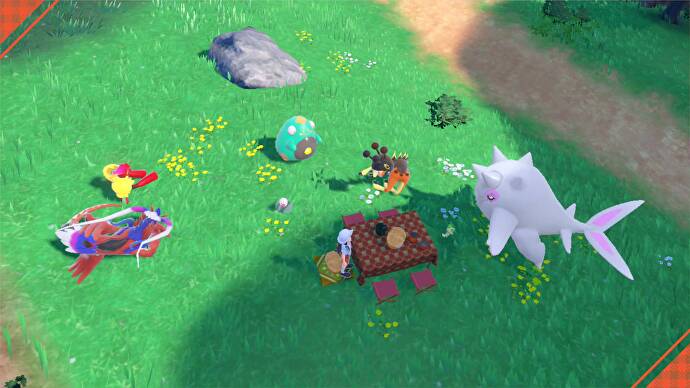
Most of the time this is great. I'll admit, I miss the structured Pokemon catching and nature documentaries where you could move around and distract Pokemon in Legends Arceus - but I still enjoyed seeing how more traditional Pokemon fighting and catching fit into this new open world.
Some changes are purely cosmetic, such as smaller species of Pokémon moving in groups until you trigger a battle where you go one-on-one with one member of the species. Others have a significant impact on gameplay, for example, trainers will no longer automatically engage in battle when they see you - you will need to talk to them to start a battle.
Multiplayer has, of course, brought back features like raids and battling other players, but the biggest and most exciting new change is the co-op approach, which is just... well, more like a lot of open world co-op games. You can invite other players to your world and you can chat. Everything is very simple.
What you can do in the world is pretty limited - you can fight each other, for example, but you can't team up to help progress the story or in trainer battles and the like - but what I like about this world is... hangoutitude all this. Since Pokémon battles literally take place in an open world, your friends can stand by while you fight, take pictures and express their emotions. You can compare fashion models. Or you can explore the world together, trying to find new nooks and crannies. In fact, the possibilities of co-op play are quite limited, but despite this, I really like the cooperative aspect. It's just a nice atmosphere.
In fact, a pleasant atmosphere describes the game quite well. Even when you zoom out on the map and see the plethora of icons corresponding to all the gyms, team leaders, and other challenges you can find, it's not overwhelming. It's clear that every effort has been made to make this open world inviting and accessible - little things like quest givers and shops with yellow speech bubbles when approaching, or areas on the map clearly numbered in a chronology that likely matches their difficulty. Want to go to area 12 from the start? Well, you can - but good luck.
technical machine
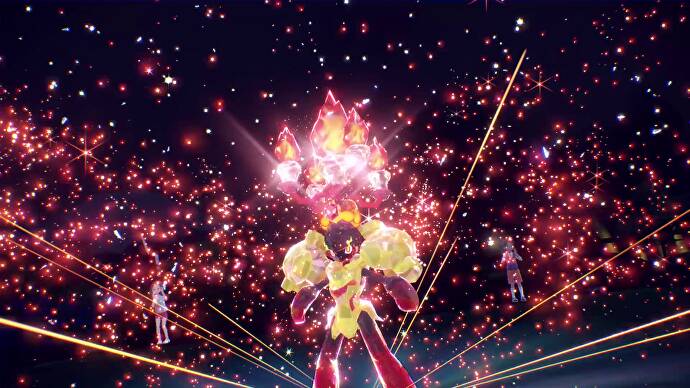
The world is also well designed. Perhaps the biggest compliment I can give is that while exploring Mesagoza, the largest city in the game, I found myself wishing I could "read" the pokey language and read what all the signs on the inaccessible buildings said. Of course, they probably don't say anything - most likely it's gibberish - but this world instills the idea that it is possible. not be. There is strength in this.
In Pokemon tradition, the biggest drawback was performance. This is preliminary and not final code, but let's face it: it works like a charm. This, by the way, is a new pig-type Pokemon. I mean he runs like a pig. The world is expansive and impressive, but the performance and visuals are hard to grasp even on the Switch - especially compared to a game like Xenoblade 3. I just don't quite get it.
None of this is particularly egregious, and in fact the Pokémon and character models look better than ever before, the closest thing to the anime in the games. But the stuttering of frames on distant objects, the pop-in images, the way the frame rate on the map drops when you run and pan the camera at the same time - all this makes you wince. Partly it's the Switch creaking with age, and partly Game Freak just can't handle the technology, which has happened more than once in recent years.
It's not a problem, but it is there. I'd like the game to perform better - and I hope it does by the time it launches next month.
Overall, though, I'm just... delighted with Pokemon Scarlet & Violet. Interestingly, when I sat down to write this preview, I realized that I like the game even more than I thought. While playing, I compared it quite often to Legends Arceus, and quite often not for the better. But as my feelings about the game settled down, I realized that this was a completely different type of game - and realizing this allowed me to better understand what kind of game it was.
This is a bold new vision for Pokemon, and while it's not a complete reimagining, it has a lot of strong ideas and creativity. I'm looking forward to the final version."

